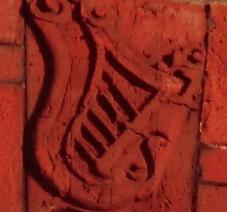
2 minute read
Was Pallant House a Jacobite symbol?


Advertisement
By local historian Andrew Berriman
little or no evidence exists to support this assertion. I ought to have written about him in my recent book, ‘In Search of Chichester’, about these ‘Chi myths’.**
The Jacobites were supporters of James Frances Stuart, the King of England from 1685 to 1688; Jacobus was Latin for James. In 1688 he had been deposed from the Crown and forced into exile abroad. Jacobites wanted to restore him to the throne of England, as the rightful King, despite his Catholic faith, which had made him unpopular with many in England. Jacobites opposed the rule of the Protestant, William of Orange (1689/1702) from the Netherlands, who had married James’ daughter Mary. They also opposed King George I (1714/27), the Elector of Hanover, a German who spoke little English, and spent most of his reign in Hanover. The Jacobite cause gained most support in Scotland, with two Risings, in 1715 and 1745 against the Hanoverians. The first was in favour of James Stuart, ‘The Old Pretender’, and the second in support of his son Charles, ‘The Young Pretender’. The rebels reached as far south as Derby, causing much panic and alarm. Many Tories, who supported the Stuarts, drank treasonable toasts, drams of whisky, to ‘the Prince across the water’. So what has all this got to do with Pallant House, built in 1712? It is remarkable in so many ways. With its seven bays and two storeys this huge red brick structure must have dominated the Pallants when first built. The flight of steps, set well back well from the pavement, was a statement in itself, as were the wrought-iron gates, railings and tall gate piers with those pesky stone birds atop them. They later were to give the house its nickname, ‘Dodo House’. They were supposed to be ostriches, a pun on the house-owner’s surname, Peckham.
It is this chap, Henry Peckham, on whom I wish to focus. He is often referred to as ‘Lisbon’ Peckham, being an importer of wines from Portugal. Actually this may be another Chichester myth, as
In all honesty Peckham was a bit of a rogue and a bounder. His father died in 1700, heavily in debt. Henry married in 1711, aged 28, and used much of his wife’s substantial dowry of £10,000 to build Pallant House. The quality of the workmanship is stunning, particularly the brickwork. The bricks are a warm red, almost vermilion colour, thanks to the presence of iron in the local clay. The red-rubber bricks are made of highly refined clay to make them softer and suitable for carving. The window heads are in gauged (or shaped) bricks, and cut back in a recessed curve to resemble softly draped curtain pelmets. Quite stunning. Of great interest are the thirteen emblems carved, again in brick, on the central keyblocks above each window, to represent Royal Families. The lower three windows are each topped with two Fleurs de Lys (France), two Thistles (Scotland) and two Roses (England). Above them are two tulips (House of Orange) and an exquisitely carved Harp (Ireland). But the remaining four are all Oak Leaf with Acorn, the symbol of the House of Stuart. Was Peckham showing his allegiance to the Jacobite cause? It’s quite possible, as he was known to be a strong Tory. There are other local instances of possible Jacobite treason, such as the nearby Charlton Hunt, which may well have been a cover for aristocratic plotting in the 1720s by Jacobite sympathisers.
** ‘In Search of Chichester’, £15, Kim’s Bookshop, South St., Chichester.








